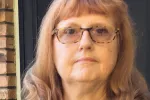At a Glance
Participants will learn strategies to practice self-care so that they can maintain professional excellence and better connect with their students.
Topics
- ESP Professional Growth Continuum
- Educator Self-Care
Outcomes
- Understand the eight Universal Themes with three Levels of Practice
- Develop your own professional goals utilizing the ESP Growth Continuum
- Align professional development opportunities with the Growth Continuum
- Develop ideas on how to utilize the ESP Growth Continuum in your district or local association and state association
Developed by:
Last Updated: July 30, 2020
Details
Audience Role
- Education Support Professional
Grade
- Early Childhood
- Elementary School
- High School
- Middle School
Session Length
1 hour
Session Format
In person
Learn More
Are you an affiliate?
Jump to updates, opportunities, and resources for NEA state and local affiliates.

Education News Relevant to You
We're here to help you succeed in your career, advocate for public school students, and stay up to date on the latest education news and trends. Browse stories by topic, access the latest issue of NEA Today magazine, and celebrate educators and public schools.
Stay Informed We'll come to you
We're here to help you succeed in your career, advocate for public school students, and stay up to date on the latest education news. Sign up to stay informed


